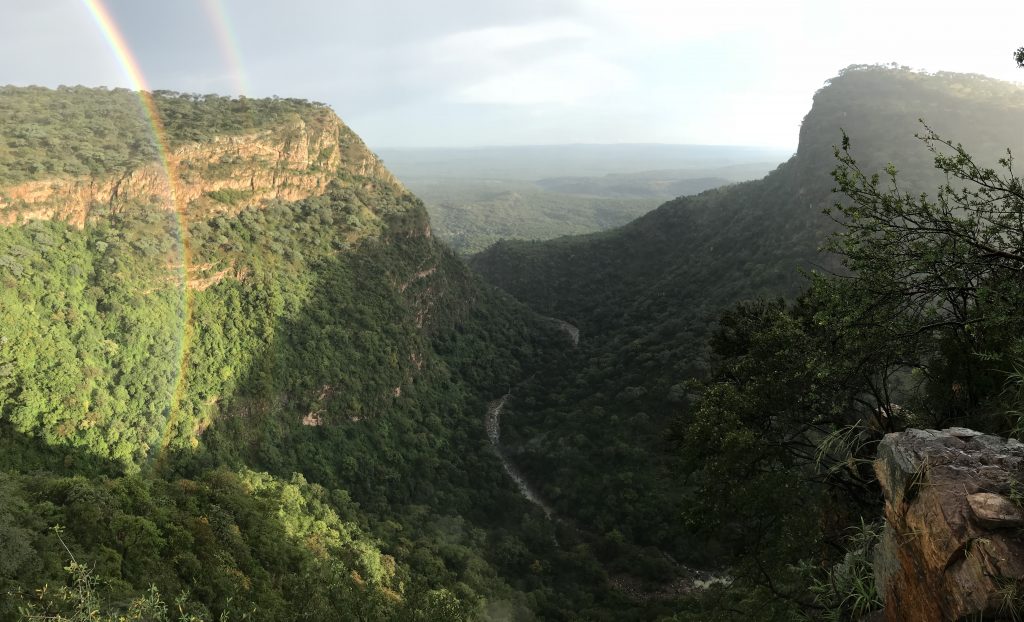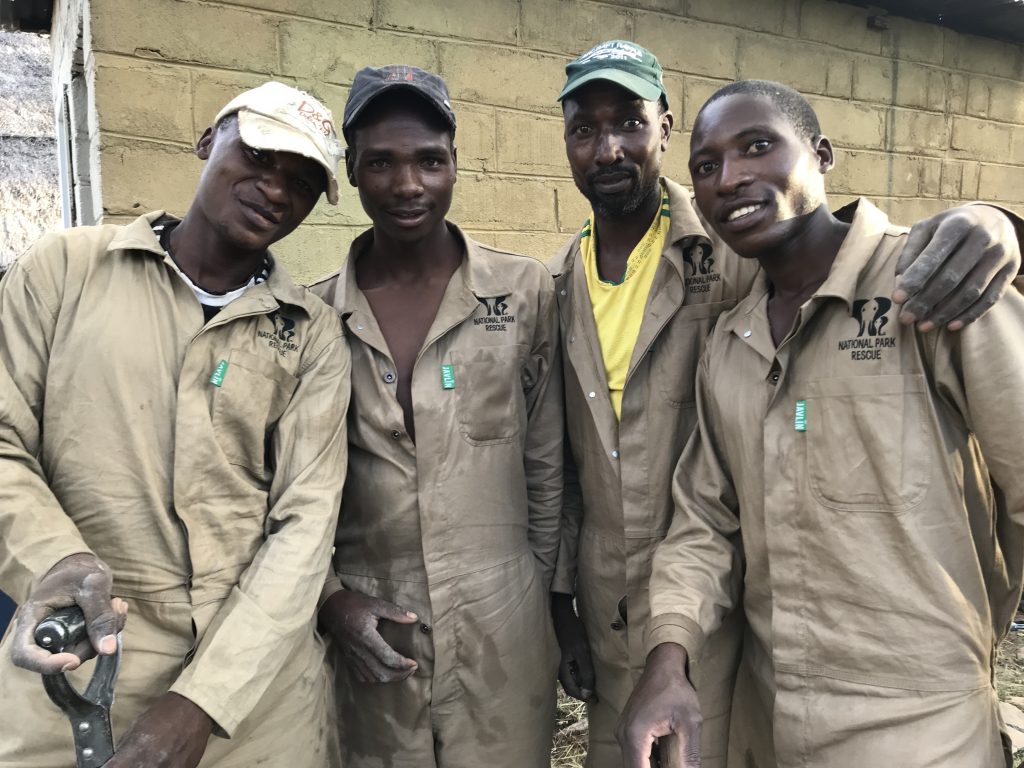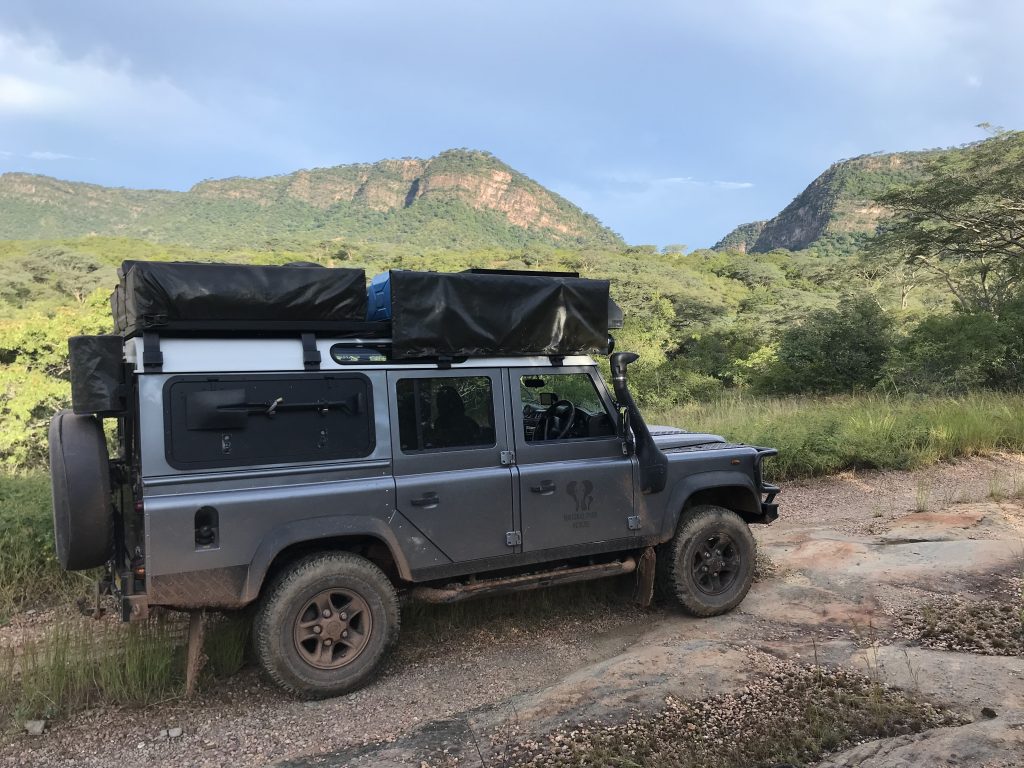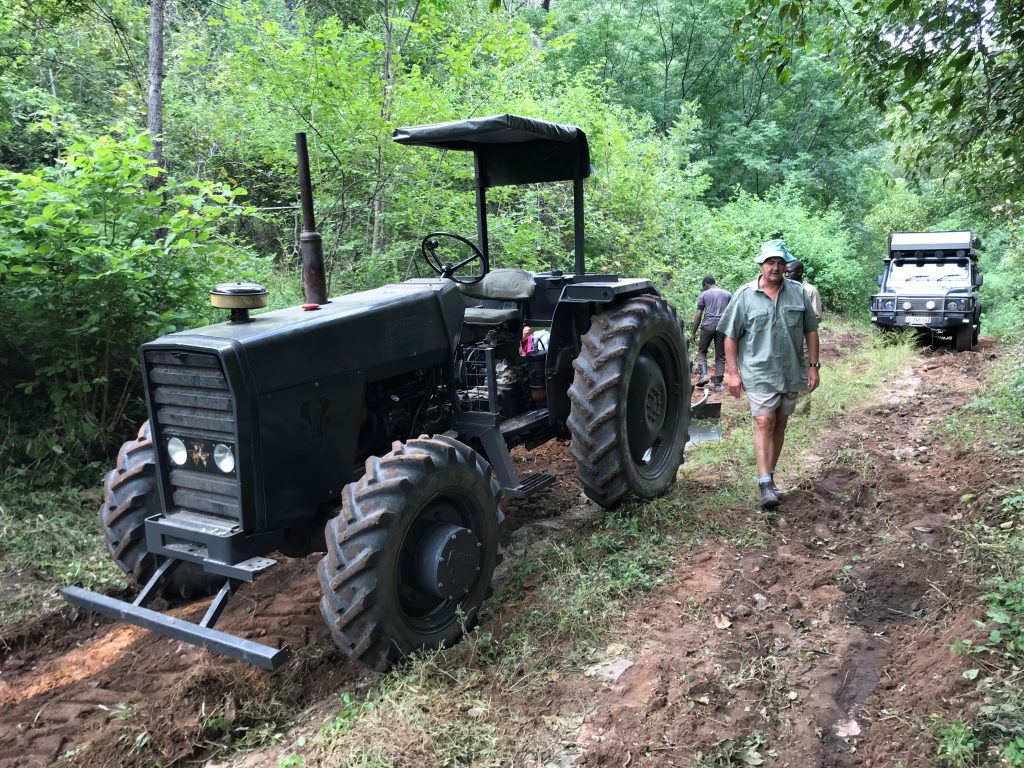Article: Shelley Cox
Images: National Park Rescue
“The human soul is hungry for beauty; we seek it everywhere – in landscapes, amidst wildlife, in companionship and in ourselves. When we experience the beautiful, there is a sense of homecoming.” – John O’Donohue

As Zimbabwe’s third largest National Park, Chizarira is probably the least known, and yet most diverse in terms of its different ecological zones within the park, ranging from lowveld valley vegetation with Mopane forests and Baobabs, to highveld broad-leaf Miombo woodlands. It is without a doubt one of the most mysterious, dramatic and remote wilderness areas and, unquestionably, one of the most spectacular landscapes with the most breath-taking views available in Zimbabwe today.
Proclaimed as a Reserve in 1958, the National Park was then gazetted to give sanctuary to wildlife driven out of the Zambezi Valley during the formation and rising waters of Lake Kariba. At an estimated 2000 square kilometres, the National Park is primarily situated atop the magnificent Zambezi escarpment mountains which are deeply grooved with thickly wooded gorges. Often referred to as “Home of the Hidden Gorges”, the park contains a number of deeply incised gorges and ravines which slice through the rugged and jagged mountain terrain, particularly in the north of the park where the Sengwa river cuts through on its path to Lake Kariba.
The name ‘Chizarira’ is derived from the local Tonga word, ‘Sijalila’, which means ‘Great Barrier’ and stands as reference to the imposing Zambezi escarpment which drops down to the Zambezi valley floor over 600m below. The park’s north-eastern edge is marked by Tundazi, a spectacularly high mountain which, according to local legend, is the home of an immense and powerful serpent. Mountain acacias adorn ridges, flanking the springs and seeps which hold surprisingly lush pockets of vegetation, creating a haven for bird species and smaller mammals alike. Down on the floodplains there is a remarkable similarity to Mana Pools National Park with towering evergreen trees and lush vegetation surrounding deep pans.
Accessibility to the park has been one of the biggest obstacles and the condition of the roads has historically limited visitors to those who are experienced 4 x 4 drivers, particularly at certain times of the year when the condition of the roads is further affected by the rains. Chizarira’s isolation, however, means that there are relatively few visitors, giving a very wild and exclusive feel to the park and making it a prime destination for walking safaris led by parks rangers or professional guides. It is excellent country for leopard which thrive in this kind of rocky, broken and jagged landscape and it has fairly good populations of antelope from kudu and klipspringers to impala and if you are lucky, roan. The park also contains buffalo, elephant and a small lion population. Traversing the riverines and spring-lines on foot often allows for some special encounters with the antelope species which inhabit the park and a slower pace allows for an appreciation of the incredible birding available here.Chizarira National Park is, in essence, a birders paradise with close to around 400 different species.
The park contains an estimated 70% of Zimbabwe’s total bird species and includes specialities such as the Narina Trogon, Livingstone Flycatcher, African Broadbill, Yellow-spotted Nicator, Racket-tailed Roller, River Warbler, Miombo Double-collared Sunbirds, Black-eared Seed eater, Barred Long-tailed Cuckoo, and the rare and elusive Angola Pitta. Most raptors can be found in the park including the Verreaux’s Eagle which nest in the Mucheni Gorge at the view point and are frequently harassed by the much smaller Peregrine Falcon. The African Crowned Eagle is generally found along the riverine of Makula Spring and the near threatened species of Ayre’s Hawk-eagle are seen as well as Black Storks and Taita Falcon which breed in the cliffs and gorges.


Over the years, due to its remote location, its relatively small number of visitors and a lack of tourism infrastructure all led to diminishing resources and the park became easy to exploit suffering a loss of species due to an increase in poaching and vulnerable to fire outbreaks.
Once a refuge for the endangered black rhinoceros, they are unfortunately, no longer present and populations of other species are not as dense as in other parks across the country.
Today however the situation is changing. Zimbabwe National Parks and Wildlife Management Authority have formed an agreement with National Park Rescue and Bhejane Trust to assist in the rehabilitation of Chizarira National Park to ensure its future protection and preservation. The work underway as a result of this collaboration will provide the wildlife within Chizarira the much needed protection and an opportunity to bounce back.
Road grading has been underway for the past few months and new road developments, including 4 x 4 routings for varying levels of experience, is in the pipeline. The airstrip has been refurbished and the Mucheni viewpoint and Mucheni Gorge campsites have had a facelift and now have running water and toilet facilities. In addition, National Park rangers have been kitted out, trained and are being given logistical support as part of increased efforts to put an end to poaching. The morale of these men on the front-lines who are protecting the park has been boosted and the good news is that efforts to bring the poaching situation under control are already bearing fruit with a noticeable increase of game being seen.
In addition, National Park Rescue are pioneering new models which they hope will allow for the park to become self-sustaining for the next 100 years plus. National Park Rescue works in collaboration with National Park Authorities to take action and end the impending disaster facing wildlife and other parks across Africa by using direct action and diplomacy to transform National Parks. 90% of their staff are locally employed on the ground in Africa including senior negotiators, conservationists, rangers and security personnel. The organisation is supported by several well known celebrities including Sir Michael Caine, Sir Roger and Lady Moore, Lord Spencer-Churchill, Rupert Everett and Michael Palin.
Visiting Chizarira has never been about seeing large herds of animals. It has been about appreciating its pristine wilderness and biodiversity, savouring the epic landscapes and absorbing the incredible tranquility which the park offers. Securing Chizarira National Park will ultimately preserve one of Zimbabwe’s last great wilderness areas and protect important populations of threatened species including elephant, lion, leopard and the rare Taita Falcon. The result will be an increase of tourism to the area, generating funds for the park and providing livelihood opportunities for the surrounding communities.
Ultimately the success of this project will mean it can continue to function as an important ecological linkage to other protected areas in the region and allow for the long term preservation of one of Southern Africa’s rapidly dwindling, truly wild and rugged habitats.

Shelley Cox is a proudly-born Zimbabwean with a deep passion for wildlife and conservation. Having studied for a Bachelor of Journalism at Rhodes University in South Africa, Shelley has worked in the tourism industry for the past nine years and is a co-owner and the Marketing and Sales Director of Africa Conservation Travel, an organisation with a focus on creating a greater connection between tourism, conservation and local communities. Shelley also does voluntary consultancy to Zambezi Elephant Fund, an organisation focused on the protecting of the Middle Zambezi Biosphere Reserve.
